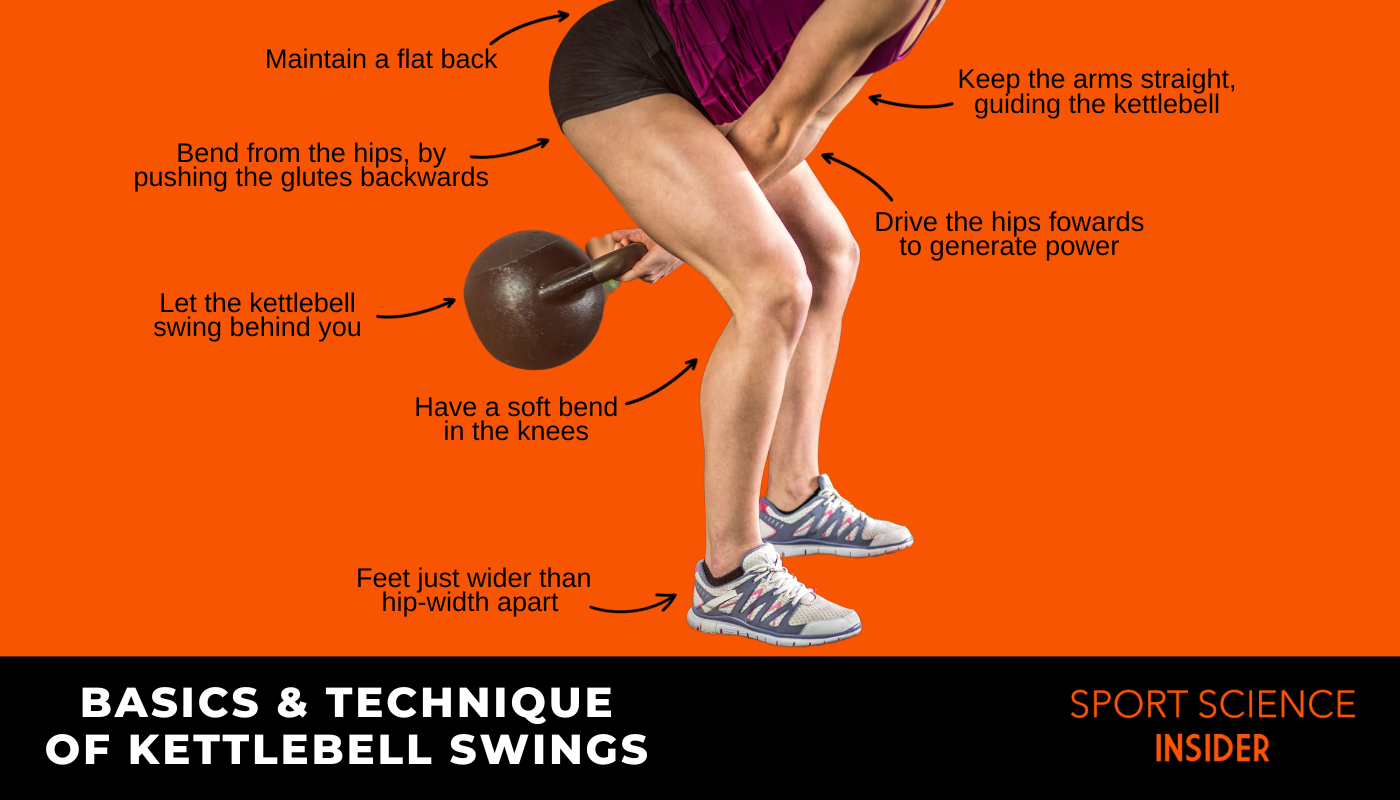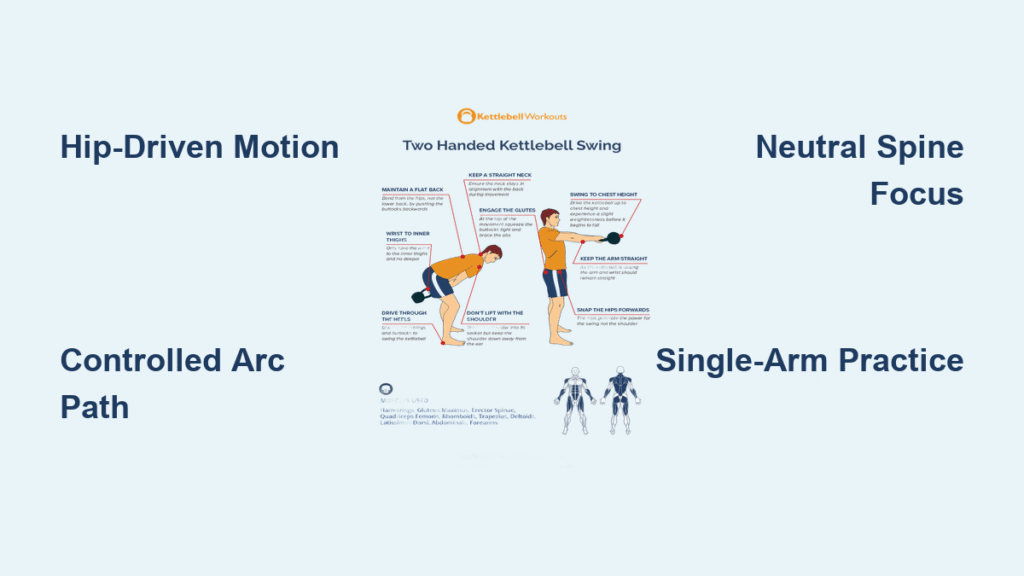The kettlebell sport swing stands as the cornerstone of competitive kettlebell lifting, yet it remains misunderstood by most gym-goers who confuse it with conventional ballistic swings. If you’ve watched kettlebell sport athletes perform fluid, controlled repetitions for ten minutes straight and wondered why their technique looks so different, you’re about to discover the precise mechanics that separate sport-style from gym-style.
Unlike the aggressive hip snap of traditional swings, the sport version demands patience, control, and an almost meditative focus on efficiency. This guide breaks down every technical detail you need to build the foundation for competitive lifts or simply refine your training approach.
Perfect Your Sport Swing Starting Position
Stance and Grip Foundation for Maximum Efficiency
Begin with feet positioned shoulder-width apart, toes pointing slightly outward at 15-20 degrees. Place the kettlebell directly between your feet, handle parallel to your shoelaces. The hook grip forms the foundation—wrap your fingers around the handle with thumbs turned back 45 degrees, creating a secure but relaxed connection.
Position your hips back into a hinge, maintaining a flat back with chest proud and eyes forward. Both hands grasp the handle with palms facing down, elbows locked straight but not rigid. This starting position determines everything that follows—rushing the setup guarantees compensations later. Your shins should remain nearly vertical, creating the optimal angle for hip hinge mechanics.
Critical Pre-Swing Checkpoints You’re Missing
Before initiating movement, verify three critical elements: neutral spine from tailbone to neck, relaxed shoulders away from ears, and weight balanced evenly across both feet. Many athletes unknowingly shift weight to their toes during setup, compromising power generation.
Check your hip position—your knees should come forward slightly to create a quarter-squat position. This double knee bend loads your hamstrings and glutes while maintaining the posterior chain emphasis that defines sport technique. If you feel tension in your quads rather than hamstrings, reset your position.
Generate Power Through Precise Hip Mechanics

The Exact Hip Sequence for Sport Swing Success
The kettlebell sport swing derives power exclusively from hip extension—not arm pull or knee drive. Initiate by driving your hips back while allowing a slight knee bend, creating a quarter-squat position. This double knee bend loads your hamstrings and glutes while maintaining the posterior chain emphasis that defines sport technique.
As the kettlebell reaches its backward apex, snap your hips forward with controlled force. The movement emphasizes complete hip extension accompanied by a subtle backward lean—not the aggressive torso extension seen in conventional swings. Your arms remain relaxed throughout, acting as ropes connecting your hips to the bell.
Pro Tip: Practice the hip hinge motion without the kettlebell first. Stand against a wall with your heels 6 inches away, then practice pushing your hips back while keeping your chest up. This wall drill builds the muscle memory essential for proper sport swing mechanics.
Control the Bell Path Like a Competition Athlete
The kettlebell traces a smooth, controlled arc rising to chest height—never higher. Unlike conventional swings that may reach eye level, sport technique keeps the bell low and tight to maintain constant arm-body contact. This proximity eliminates the “red zone” where the kettlebell floats freely, reducing joint stress and energy leaks.
Focus on creating a pendulum motion rather than launching the bell. The kettlebell should feel like an extension of your hips, moving with fluid grace rather than explosive force. This distinction becomes crucial as fatigue sets in during longer sets. If you notice your arms breaking away from your torso, reduce your range of motion until you regain control.
Master Sport-Specific Breathing Patterns
The Rhythmic Breath Control That Prevents Fatigue
Time your breathing to enhance performance and delay fatigue. Execute a sharp, forceful exhale during the explosive hip drive—the upward swing phase. This creates intra-abdominal pressure that stabilizes your spine while facilitating the hip snap.
During descent, control your inhale to prepare for the next repetition. Establish a consistent rhythm: exhale up, inhale down, maintaining this pattern even as fatigue accumulates. Many athletes find counting breaths helps maintain cadence during extended sets. Beginners should aim for 50-100 perfect repetitions with proper breathing before increasing duration.
Advanced Breath Timing for Competition Preparation
As you build endurance, experiment with delaying your exhale slightly to reduce core engagement when technique degrades under fatigue. This modification requires extensive practice but proves valuable during ten-minute competition sets where energy conservation becomes paramount.
Monitor your breathing during longer sets—when you catch yourself holding your breath, immediately reduce your pace. Proper breathing isn’t just technique; it’s the difference between completing your target repetitions or failing early from preventable fatigue.
Execute Proper Single-Arm Sport Swings
Why Single-Arm Technique Is Non-Negotiable for Sport
All competitive kettlebell sport exercises utilize single-arm execution—making single-arm sport swings essential for skill transfer. The movement directly translates to snatch, clean, and jerk mechanics while building unilateral strength endurance required for competition.
Practice single-arm swings with the same precision as double-arm variations. The asymmetrical loading challenges core stability differently, revealing imbalances that symmetrical training might mask. Start with lighter loads to master the unilateral pattern before progressing—typically 4-8kg lighter than your double-arm capacity.
Critical Adjustments for Single-Arm Execution
When transitioning to single-arm swings, maintain identical hip mechanics while adjusting grip position. Place your working hand in the center of the handle, free hand either on hip or extended for counterbalance. The bell path remains unchanged—low, controlled arc to chest height.
Warning: Don’t let your torso rotate toward the working side. Maintain square hips throughout the movement to prevent spinal twisting. If you notice rotation, immediately reduce your load and focus on hip-driven movement rather than arm pull.
Eliminate These Common Sport Swing Errors

Postural Breakdowns That Cause Injury
The most prevalent error involves rounding the spine during descent, often caused by excessive bell weight or fatigue. Maintain neutral spine throughout—imagine balancing a book on your lower back. When form degrades, reduce load immediately rather than pushing through compromised positions.
Shoulder elevation represents another frequent mistake. Keep shoulders relaxed and down, avoiding the shrug that creeps in during challenging sets. Think of your arms as cables—tight cables transfer force efficiently, loose cables waste energy. If your shoulders rise toward your ears, reset your position immediately.
Rhythm and Timing Mistakes That Waste Energy
Rushing the descent phase disrupts the pendulum rhythm essential for sport technique. Allow the kettlebell to fall naturally rather than forcing it down. Jerky transitions indicate poor hip timing—smooth movement reflects proper technique and conserves energy.
Many athletes mistakenly drive with their knees rather than hips. To test this, practice swings with your heels elevated on small plates. If you can’t maintain proper form, you’re relying too much on quad drive rather than posterior chain engagement.
Follow This Sport Swing Progression System
The Step-by-Step Skill Development Sequence
Master the kettlebell sport swing before attempting advanced movements—this foundation determines long-term success. Progress through this sequence: perfect double-arm sport swing → single-arm sport swing → clean → jerk → snatch. Each builds upon the previous, creating layered technical proficiency.
Establish consistency benchmarks: maintain identical technique for 50 consecutive repetitions before increasing load. This standard ensures technical mastery rather than simply adding weight to compensate for form flaws. Many athletes progress too quickly and develop compensatory patterns that hinder future performance.
Sport-Specific Load and Duration Guidelines
For sport-specific training, select loads that allow 10-minute continuous performance with perfect form. This might mean starting with 12-16kg for most athletes, regardless of conventional swing strength. Remember: sport technique prioritizes duration over resistance.
General fitness applications permit heavier loads for shorter durations, but maintain sport mechanics to preserve movement patterns. Double-arm variations remain acceptable for variety, though they won’t directly transfer to competitive movements. Track your progress by time completed with perfect form rather than weight lifted.
Sport vs Conventional Swing: Technical Differences That Matter

Key Mechanical Distinctions You Need to Know
The sport swing emphasizes posterior chain endurance through controlled hip extension, while conventional swings prioritize explosive power development. Sport technique allows backward torso lean and quarter-squat knee position, whereas conventional styles maintain upright torso with minimal knee bend.
Foot pressure distribution differs significantly—sport swings utilize balanced pressure across the foot, while conventional techniques emphasize heel drive. This subtle distinction changes muscle recruitment patterns and training adaptations. Sport swings create a more natural movement pattern that translates directly to competition requirements.
How to Choose the Right Swing for Your Goals
Competition preparation demands exclusive single-arm sport swing practice. General fitness goals permit hybrid approaches combining sport and conventional styles based on individual preferences and objectives. The key lies in understanding why each style serves different purposes rather than blindly adhering to dogma.
If your goal is 10-minute continuous performance, sport technique is essential. For metabolic conditioning with heavier weights, conventional swings may serve better. Both have value—understand your objective before selecting your technique.
Maintain Long-Term Swing Performance
Daily Practice Protocol for Technical Mastery
Incorporate sport swings as movement prep before other training, using light loads to groove patterns. Five minutes of perfect practice daily surpasses one hour of sloppy technique weekly. Focus on quality over quantity—every repetition should look identical.
Start each session with 5-10 minutes of single-arm swings at 50% competition weight. This builds technical proficiency while preparing your nervous system for heavier work. If you feel technique slipping, immediately reduce weight rather than continuing with poor form.
Strategic Recovery Approaches for Swing Athletes
The sport swing’s controlled nature makes it ideal for active recovery between heavy training days. Use 16-20kg bells for 5-10 minute sets at conversational pace to enhance blood flow without additional joint stress.
Monitor grip fatigue closely—sport swings challenge grip endurance differently than conventional styles. Implement farmer carries and dead hangs to address weak links revealed during longer sets. When grip fails before hip strength, it’s time to incorporate specific grip work into your routine.
Success with kettlebell sport swings emerges from patience and precision rather than aggression. Treat each repetition as practice for the next, building technical mastery that transfers to every other kettlebell movement. Whether pursuing competition goals or refining general fitness, the sport swing provides the foundation for sustainable, powerful movement patterns that last a lifetime.
Start light, focus on perfect form, and let consistency—not intensity—drive your progress. The athletes you see performing effortless ten-minute sets began exactly where you are now, mastering these same fundamentals one controlled swing at a time. Track your progress by time completed with perfect form, not by how heavy you lift, and you’ll build the endurance and technique that defines true kettlebell sport mastery.




